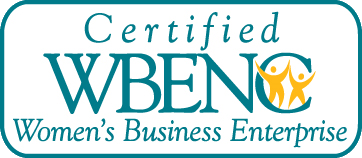 Workplace wellness is full of rewards, reimbursements, discounts and other incentives, but what’s really the point? Employers want their workers healthier so they are productive and to keep health care costs down. Health plans want to reduce claims, but what do employees want?
Workplace wellness is full of rewards, reimbursements, discounts and other incentives, but what’s really the point? Employers want their workers healthier so they are productive and to keep health care costs down. Health plans want to reduce claims, but what do employees want?
Not long ago, I met a young lady on the beach. We struck up a conversation and I found out that she worked in marketing as a project manager for an extreme sports marketing company. She was a late twenty something millennial who was well spoken, intelligent and in very good physical shape. Always interested in the parallel of traditional marketing and wellness engagement I began to ask her questions. When she spoke about her role as a project manager and liaison between clients and the creative team, she had communicated a sense of pride in her work. I asked her questions about her work environment and what she liked most about her job and the company she worked for. I was surprised to learn that she was making a smaller salary than I would have guessed. I was even more amazed when she shared how much she appreciated the “wellness allowance” that the company gives employees. Being a sporting company, she explained, it is encouraged that employees stay in good shape. To that aim, she proudly shared that she, and all employees, receive $500 a year to spend however they feel appropriate towards their wellness. “My company really cares about the health of their employees”, she told me.
This really got me thinking. I asked if they had any other wellness programs, such as health assessment questionnaires, biometric screenings, incentives or online portals. The look on her face almost made me believe that I was speaking a foreign language! To this young lady, the simple fact that the company handed her free money to use as she saw fit towards her good health was a benefit like none other. I asked her what would be a motivation to go to another company, her answer wasn’t what I thought. I imagined she would say a higher salary, but instead she wanted the flexibility to work from home. However, she pointed out, it would be hard to leave that $500 wellness allowance behind!
How had this small/mid size company gotten wellness engagement so right, when according to Gallup only 24% of employees at companies that offer a traditional wellness program participate in it? There are many ways to utilize $500 towards physical health such as a gym membership, exercise equipment, healthy meal services and more. Imagine how engaged this woman would be if her company expanded this wellness allowance to include a wider focus on well-being.
A survey by fidelity investments and the National Business Group on Health in 2015 showed that companies were spending an average of $693 per worker on wellness programs. Large companies with 20,000 or more employees are spending up to $878 per worker. If those dollars were going to employees with guided resources to improve other dimensions of wellness it may look like:
Emotional wellness- Monthly massages
Spiritual wellness- Funding a camping trip.
Intellectual wellness- Passes to a museum or a class
Social wellness- Dollars towards a family day trip.
The suggestions could be endless. Some may ask, how can employees be trusted to use the money as intended? My question back would be, what are traditional incentive dollars or health deductions doing now to help improve an individual’s well-being? Does a health assessment make someone healthier or give people resources to strive towards a goal? What would a happy medium look like? How about a wellness program that meets the employee where they are?
I learned from this woman that the wellness allowance; small as it may be compared to high salaries or hefty bonuses, was appreciated, valued and utilized as intended. How can we as wellness professionals take a step back from trying to shape behavior and manage population health and:
- Empower individuals to feel good about the intentions of their employer in regards to wellness.
- Entrust people to use resource granted to them towards their well-being to improve in the areas that are important to them.
- Understand that it is human nature to want to feel good and be happy. In order for real change to happen one must be pulled rather than pushed.
Motivating populations, shaping culture and inspiring actions can be accomplished through creative and continuous communications. Campaigns that market feel good replacements for health harming coping strategies and messages that inform but also spark emotion to draw people to simple steps in healthier directions.







